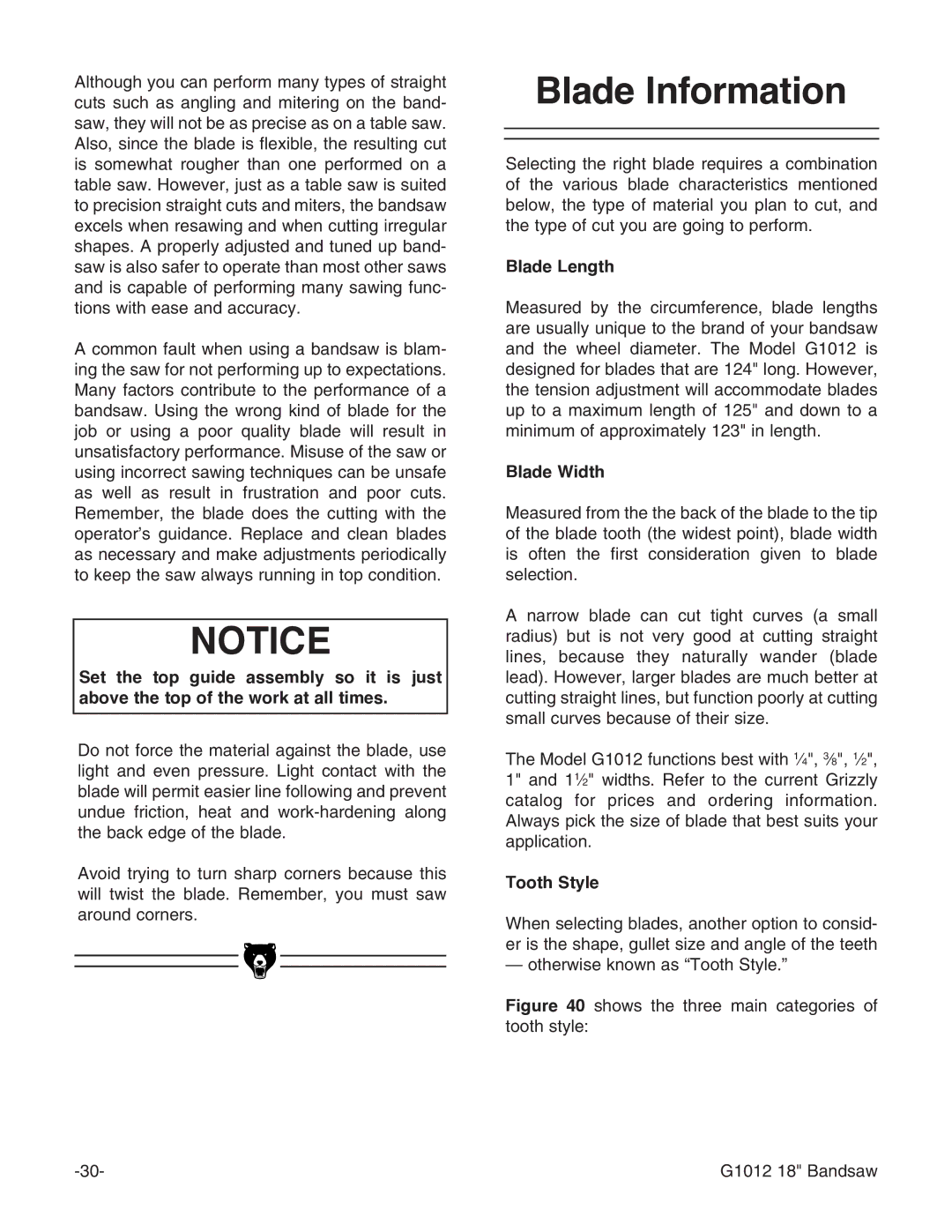
Although you can perform many types of straight cuts such as angling and mitering on the band- saw, they will not be as precise as on a table saw. Also, since the blade is flexible, the resulting cut is somewhat rougher than one performed on a table saw. However, just as a table saw is suited to precision straight cuts and miters, the bandsaw excels when resawing and when cutting irregular shapes. A properly adjusted and tuned up band- saw is also safer to operate than most other saws and is capable of performing many sawing func- tions with ease and accuracy.
A common fault when using a bandsaw is blam- ing the saw for not performing up to expectations. Many factors contribute to the performance of a bandsaw. Using the wrong kind of blade for the job or using a poor quality blade will result in unsatisfactory performance. Misuse of the saw or using incorrect sawing techniques can be unsafe as well as result in frustration and poor cuts. Remember, the blade does the cutting with the operator’s guidance. Replace and clean blades as necessary and make adjustments periodically to keep the saw always running in top condition.
NOTICE
Set the top guide assembly so it is just above the top of the work at all times.
Do not force the material against the blade, use light and even pressure. Light contact with the blade will permit easier line following and prevent undue friction, heat and
Avoid trying to turn sharp corners because this will twist the blade. Remember, you must saw around corners.
Blade Information
Selecting the right blade requires a combination of the various blade characteristics mentioned below, the type of material you plan to cut, and the type of cut you are going to perform.
Blade Length
Measured by the circumference, blade lengths are usually unique to the brand of your bandsaw and the wheel diameter. The Model G1012 is designed for blades that are 124" long. However, the tension adjustment will accommodate blades up to a maximum length of 125" and down to a minimum of approximately 123" in length.
Blade Width
Measured from the the back of the blade to the tip of the blade tooth (the widest point), blade width is often the first consideration given to blade selection.
A narrow blade can cut tight curves (a small radius) but is not very good at cutting straight lines, because they naturally wander (blade lead). However, larger blades are much better at cutting straight lines, but function poorly at cutting small curves because of their size.
The Model G1012 functions best with 1⁄4", 3⁄8", 1⁄2", 1" and 11⁄2" widths. Refer to the current Grizzly catalog for prices and ordering information. Always pick the size of blade that best suits your application.
Tooth Style
When selecting blades, another option to consid- er is the shape, gullet size and angle of the teeth
— otherwise known as “Tooth Style.”
Figure 40 shows the three main categories of tooth style:
G1012 18" Bandsaw |
